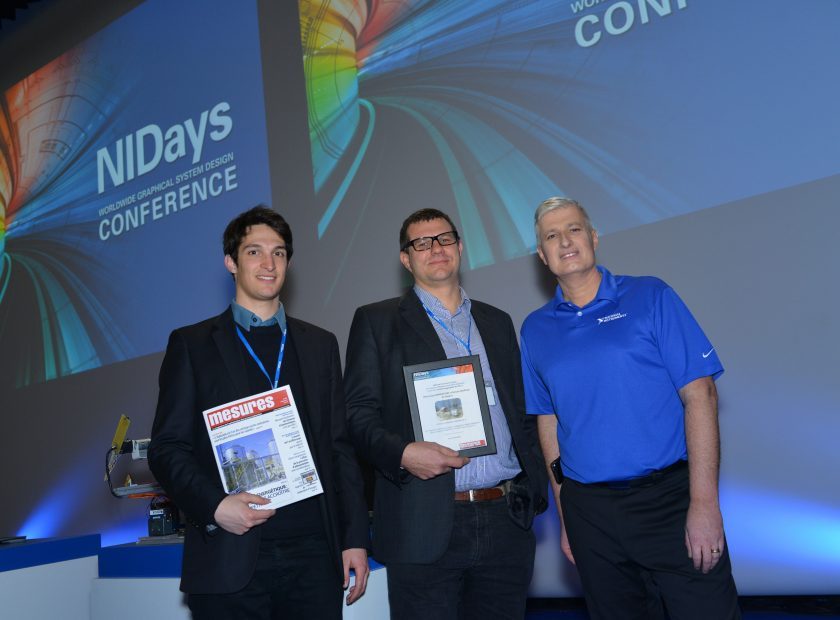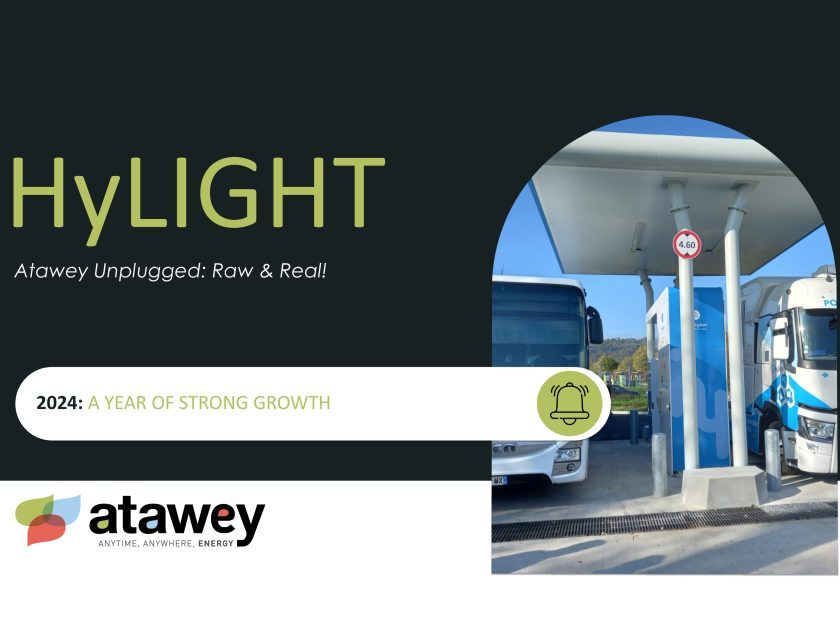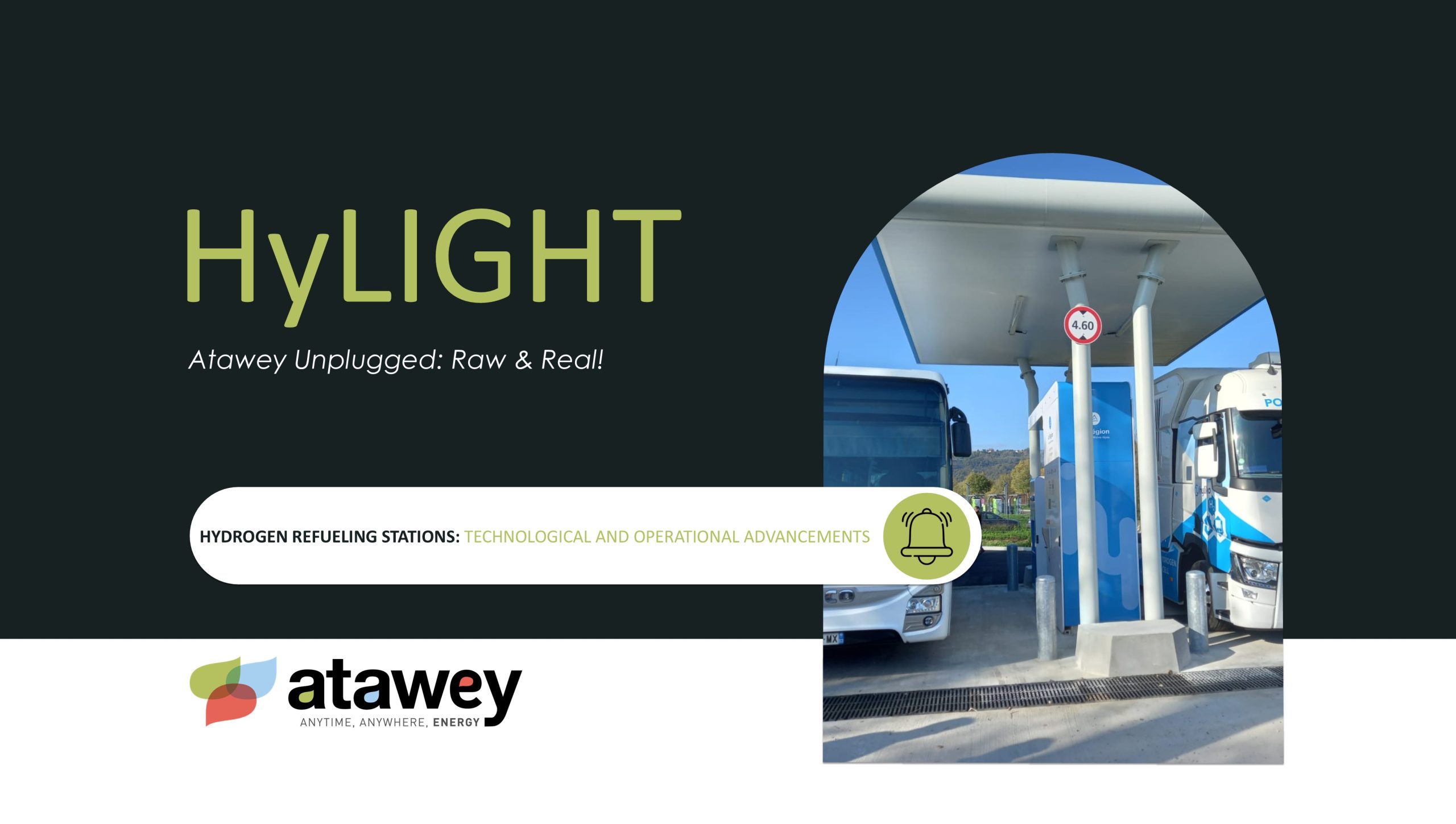
Hydrogen Refueling Stations: Spotlight on Our Latest Technological and Operational Advancements
Hydrogen mobility has transitioned from a future concept to a present-day solution, effectively addressing the challenges of decarbonizing transportation. Across Europe and particularly in France, initiatives are accelerating to electrify both public and private fleets—encompassing electric and hydrogen vehicles—to reduce reliance on fossil fuels.
In this dynamic landscape, Atawey positions itself as a technological leader with a clear vision: to make hydrogen accessible, reliable, and efficient throughout Europe for diverse applications. Our teams are advancing rapidly, developing cutting-edge technologies and hydrogen refueling solutions ready for large-scale deployment.
This article delves into our latest developments shaping the hydrogen infrastructure of tomorrow.
Technological Advancements in Our Next-Generation Stations
To support the rapid growth of hydrogen mobility, our H2 stations are continually evolving, integrating state-of-the-art features designed to secure operations, facilitate remote management for station operators, and enhance the user experience for drivers.
Precision for Trust: Hydrogen Measured to the Gram
Since the third quarter of 2024, our stations have achieved legal metrology certification. This ensures that the quantity of hydrogen dispensed is measured with gram-level precision, comparable to traditional fuels, providing users with a transparent refueling experience.
This certification is part of a comprehensive technological ecosystem developed by Atawey to ensure optimal end-to-end operation:
- ata’Config: A flexible configuration tool that tailors stations based on vehicle type (light vehicles, buses, heavy-duty trucks) and operational context (urban, logistics, mountainous areas), catering to project developers’ specific needs.
- ata’Start: A rapid initialization software enabling simplified, quick, and secure commissioning of Atawey’s mobile stations. It centralizes startup operations, automatically configures essential parameters, and reduces on-site deployment time.
- ata’Check: An intelligent diagnostic system that continuously monitors the station’s health and its critical components (sensors, compressors, safety systems). It facilitates proactive preventive maintenance, significantly reducing the risk of service interruptions.
- ata’Metrics: An integrated metrology chain ensuring precise measurement of dispensed hydrogen, compliant with legal metrology standards. It guarantees transparent, reliable, and fair billing for users while simplifying reporting for operators.
Legal Metrology: Benefits for Operators
- Accurate measurement of dispensed hydrogen
- Transparent and fair payment
- Enhanced regulatory compliance
This strategic milestone reinforces hydrogen as a viable alternative energy for large-scale mobility. And this is just a glimpse of our recent technological advancements…
Next-Generation Refueling Solutions Designed for Longevity
Our stations are engineered to provide secure, rapid, seamless, and versatile refueling. They are built upon three pillars: capacity, scalability, and continuous improvement.
Key innovations include:
- Dual-Dispenser Unit: Enables simultaneous refueling of two vehicles or two tanks within a single vehicle, effectively doubling the station’s productivity.
- Modular Design: Accelerates manufacturing and deployment, simplifies maintenance, and allows for on-demand capacity scaling.
- Intelligent Energy Management Systems: Optimize energy consumption during refueling phases for enhanced overall efficiency.
Regarding maintenance, the modular architecture allows for swift interventions, with accessible and interchangeable components, resulting in maximum daily station availability.
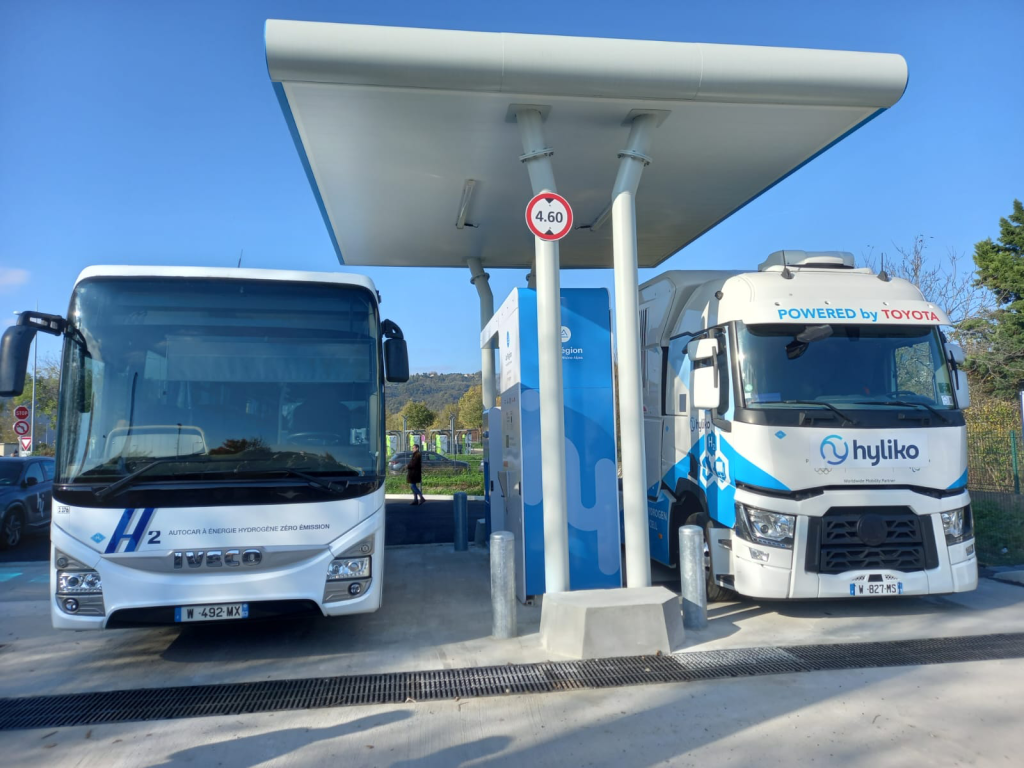
Atawey’s hydrogen filling stations are now equipped with dual filling stations, enabling two vehicles or two tanks from a single vehicle to be filled simultaneously.
Station Retrofitting: Accelerating Transition by Optimizing Existing Infrastructure
Given the rapid growth of hydrogen applications, it’s essential not only to build new infrastructure but also to upgrade existing ones. At Atawey, we offer customized retrofitting solutions to adapt stations to the evolving demands of intensive mobility, maximizing the utility of already-installed resources.
Why Retrofit?
- Faster deployment compared to reconstruction
- Reduced overall costs
- Improved carbon footprint
- Adaptability to new intensive mobility requirements (heavy-duty vehicles, increased capacities)
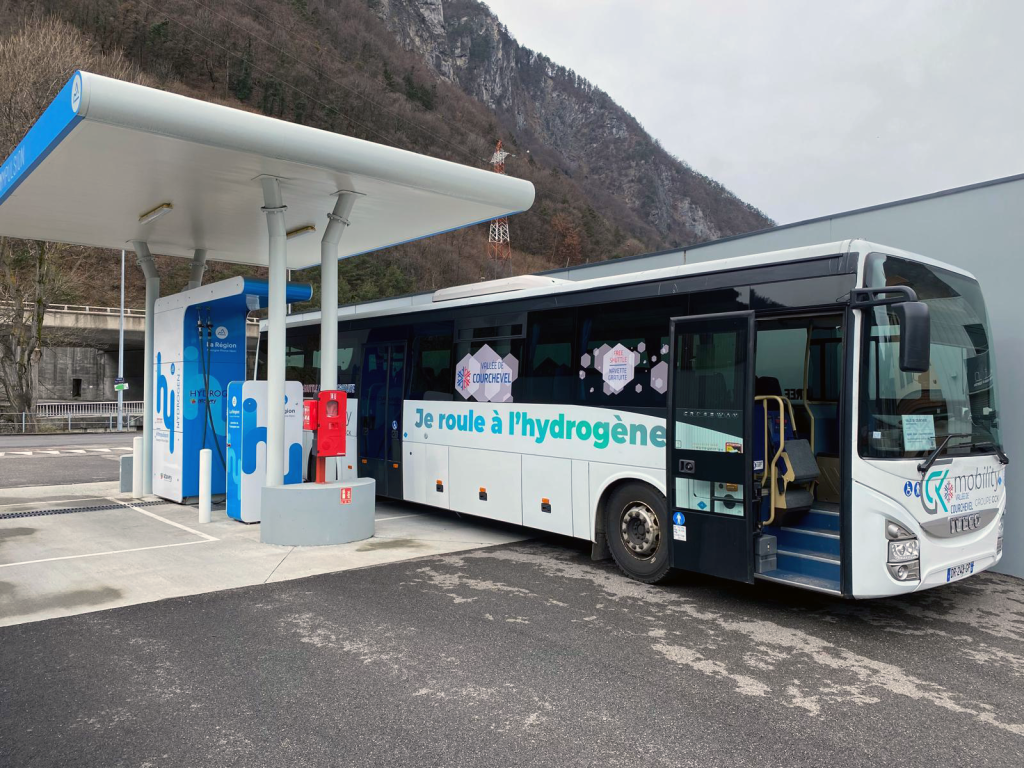
The HYmpulsion Station in Moûtiers Retrofitted in Early 2025
Initially designed for light vehicles, the station was retrofitted to accommodate hydrogen buses and trucks. The operation involved:
- Replacing light-duty vehicle-specific equipment
- Adjusting control systems and refueling protocols for heavy-duty vehicles
- Increasing storage capacity and distribution pressure
This is a concrete example of successful optimization achieved with reduced costs and timelines.
Concrete Operational Advances for Heavy-Duty Mobility
Heavy-duty transportation is also transitioning to hydrogen. In 2024, nearly 49% of buses sold in Europe were zero-emission, with a growing share powered by hydrogen. Over 330 hydrogen buses were operating across Europe, including more than 70 in France. Atawey’s stations, with their versatility and scalability, effectively support this shift.
Stations Compliant with AFIR Regulations
In a rapidly evolving European regulatory environment, Atawey has designed its stations to meet the requirements of the Alternative Fuels Infrastructure Regulation (AFIR), the reference framework for deploying alternative energy refueling and charging infrastructures in Europe.
AFIR mandates include:
- Minimum performance levels for public hydrogen refueling stations (flow rate, availability, safety)
- Interoperability of equipment and communication protocols
- Obligations to provide real-time information (availability, pricing, station status)
- Transparent billing and non-discriminatory access
Thanks to their modular design, metrology certification, native connectivity, and advanced supervision interfaces, Atawey’s hydrogen refueling solutions are already compliant with these requirements, facilitating user access.
CCPEVA Experimentation: Atawey's Mobile Station Put to the Test
In the Pays d’Évian region, the local authority (CCPEVA) conducted a real-world pilot program with a hydrogen bus and coach, both refueled for 15 consecutive days using an Atawey mobile station. The objective was to test decarbonized public transport solutions under real operating conditions:
- Same routes and frequencies as diesel vehicles
- On-site refueling with no disruption to service
- Streamlined logistics and proven efficiency
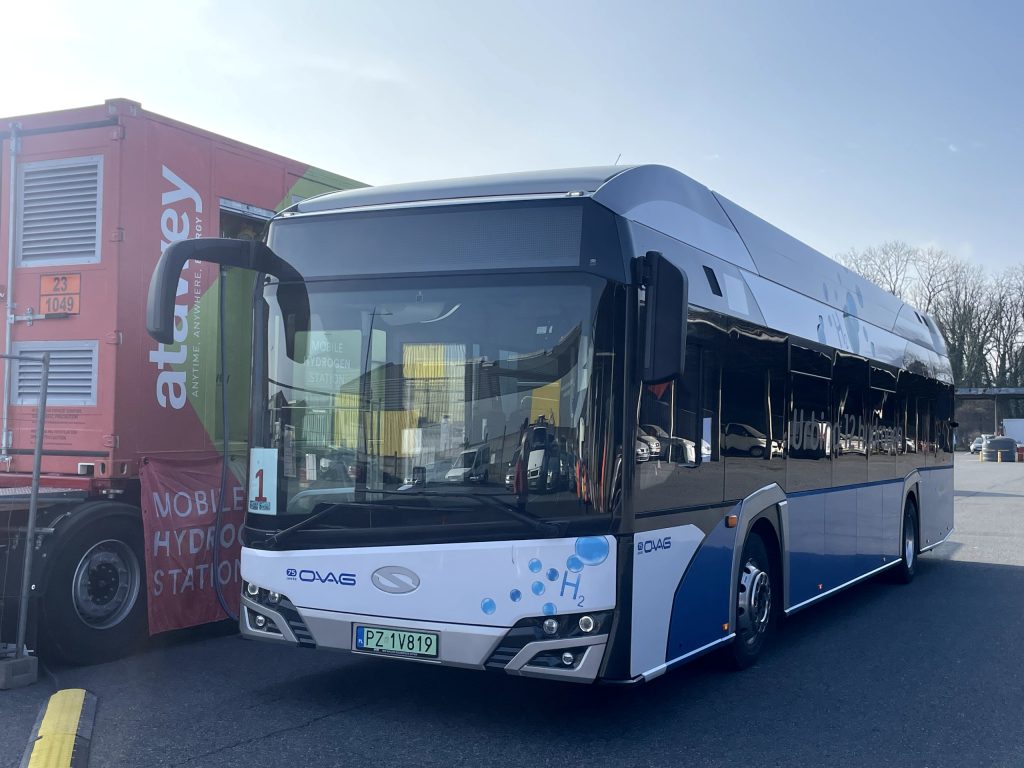
The CCPEVA project clearly demonstrated Atawey’s technological agility and ability to support the hydrogen transition—even in regions without fixed infrastructure.
Operational Milestones Reached Across All Our Projects
At Atawey, every station undergoes a strict validation process before being commissioned in the field. Two key stages mark this journey: FAT and SAT.
- FAT (Factory Acceptance Test):
Conducted in our workshops, this stage simulates real-world conditions to test all components and systems. It ensures full compliance with technical specifications, safety standards, and operational quality—guaranteeing performance prior to shipment. - SAT (Site Acceptance Test):
Carried out on-site, this final stage validates the station’s full integration into its operating environment, including all utility connections, real-world vehicle fills, and environmental conditions. It’s the final go-ahead before launch.
These tests are essential to ensure each station—whether a compact solution for a local authority or a high-capacity hub for heavy fleets—is safe, reliable, and ready from day one.

Our First High-Capacity Stations Nearing SAT Readiness
Our large-capacity stations are moving closer to deployment, with key industrial milestones already achieved:
- 4 FATs validated between late 2024 and early 2025 for 1.3-ton/day stations
- 2 FATs validated in early 2025 for 2-ton/day stations
Initial HDV (heavy-duty vehicle) refuelings have already confirmed:
- Optimized flow rate
- Smooth refueling experience
- Ease of use for drivers
Several of these stations are now preparing for their SAT validations, marking a major step in scaling up the hydrogen refueling infrastructure.
Momentum in Medium-Capacity Hydrogen Refueling Solutions Too
Innovation doesn’t stop at large-scale deployments:
- FAT completed for the TECHFEM station, now being installed in Italy
- SAT validated for our Compact L+ station, designed for bus refueling—an ideal format for municipalities or companies with limited space and a small HDV fleet
These projects prove that our stations can adapt to a wide range of needs, from local rollout to intercity operations.
In summary, key milestones have been reached by Atawey in recent months
- Official metrology certification
- Launch of stations with dual-dispenser architecture
- First successful HDV refuelings
- Deployment of mobile stations for temporary needs
- FAT and SAT validations for multiple high-capacity stations
Our technology evolves constantly to stay aligned with real-world conditions. Each innovation is designed to accelerate the energy transition—right now, not someday.
Behind every technological and operational achievement at Atawey stands a dedicated team. Our success is driven by passionate individuals: engineers, project managers, field technicians, and support staff—all working together to advance hydrogen mobility.
Thanks to this collective expertise, we are able to:
- Consistently deliver high levels of safety, quality, and reliability
- Continuously adapt our technologies to a wide variety of operational constraints
- Respond swiftly to on-the-ground requirements




